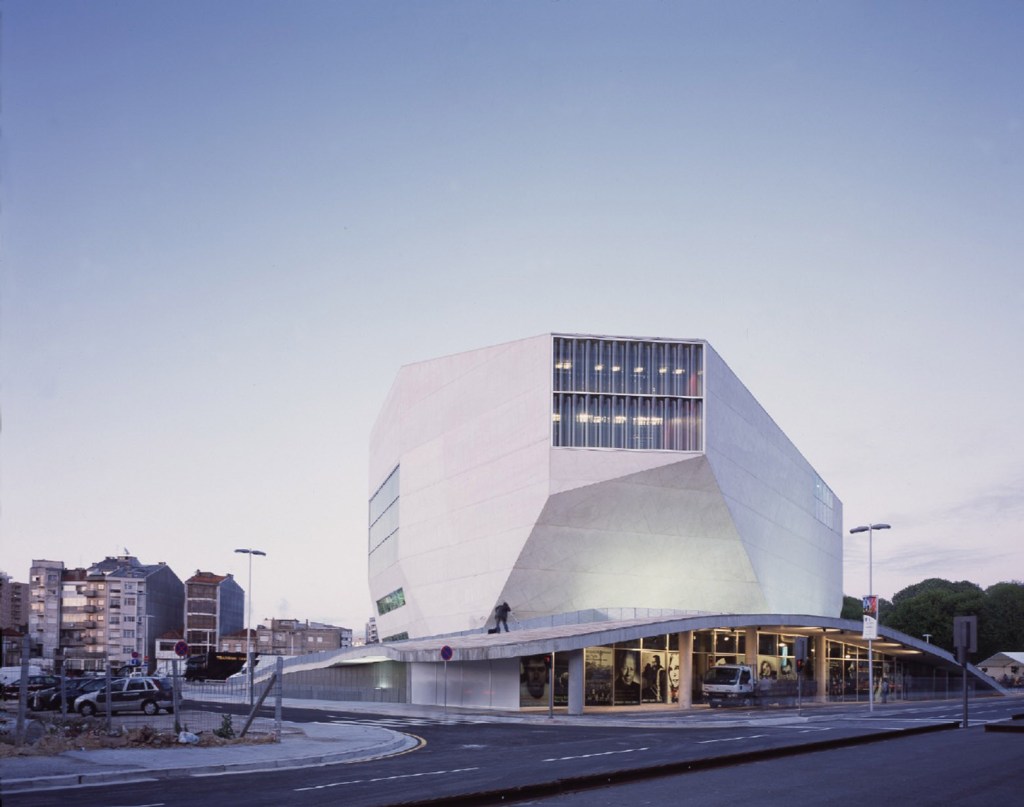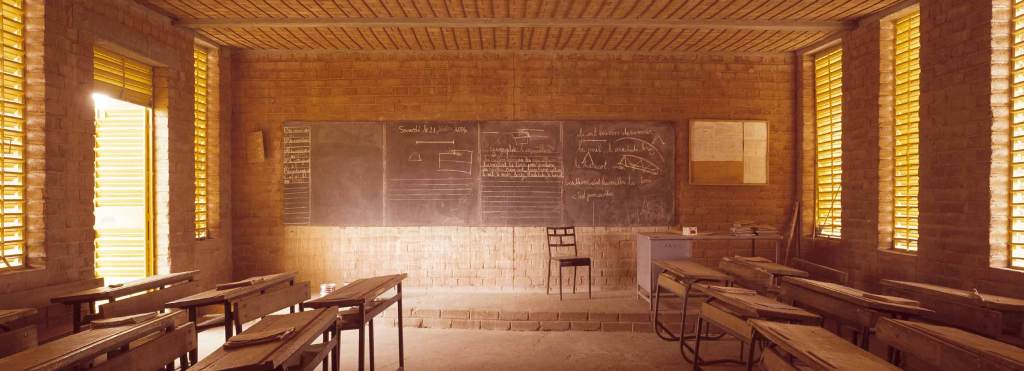Header image: Library for Gando’s school, Francis Kéré.
The need to break with the past and show a contemporary architecture, technological, and cheap, led modern architecture to ignore the contexts, the history of places, focusing on the definition of space and construction technique. Today, there seem to be two currents, one that follows those steps initiated by the modern movement, and the other that seems to want to reconcile with local places and identities.
The hegemony in today’s architectural landscape oscillates between the two, and varies depending on the geographical location, from the high towers of Dubai to the earthy and humble buildings of Gando. But do they always follow such clear guidelines? One current defends local identity, the other ignores it? Where lie the greys of this degraded monochrome?
On punctual abstractions in time and places
Two geographical locations with similar characteristics. Two different moments in time. Two ways of understanding the contemporary. What do Habitat 67 by Moshe Safdie and Silodam by MVRDV have in common and how do they differ?
Habitat 67 appears as a dream project in a doctoral thesis. A stack of construction systems that promises to provide the housing of the future with the premise that it must also be cheap, have the advantages offered by the urban density of cities, and rescue nature, fresh air, and gardens of rural housing. All this passed through a sieve that endows the project with a certain spectacle, fantasy, of a sculptural air that today would be seen with bad eyes in some of our schools of architecture.
The project takes shape when the 1967 Montreal expo is held, and the question arises: Does identity exist in this vacant lot to be developed in this event?
We can understand that in Safdie’s eyes the project is a utopia that is placed on a “tabula rasa”. It seeks to generate natural spaces, but is that rooted in the nature of the place? The patterns of shadows and ventilation may be taken into account, but does this speak to us of the identity of the territory?

Habitat 67. Moshe Safdie. 
Silodam. MVRDV.
Almost 50 years later, in a place where there were quays in Amsterdam and as if it were now a freighter with containers, another stack of houses is materialized that remains above the sheet of water of the river IJ. A project of a much more solemn character, which does not allow excessive arbitrary gestures. At the time of the justification of the smallest detail, the different types of finishes appear to tell us that inside there are different types of dwellings, the form is compact and avoids arbitrariness, and where nature used to be sought in Montreal, here it is limited to opening up to it with the wide openings of the rooms.
Apparently we are dealing with a project of contemporary appearance, new, but is it always going to be like this? The shape of Habitat 67, resulting from its originality, seems to give it an immortal youth. Design denies its capacity to age. Immortality thanks to originality. What about Silodam? Its future is not so clear, it is currently an original concept, but it is easier to copy, to imitate. Its originality does not give it the capacity to be immortal. Will it become an obsolete work, in the same way that we observe the buildings built in the 1980s with methods that were at the forefront at the time, and that are now archaic? Just like those false office ceilings that now sadden us when we enter, when they used to tell us about cutting-edge technology?
Is this the way in which fashion enters architecture? Where is the idea? Where is the idea associated with the material? When can the idea through the material turn the project into an immortal being?
On death by repetition
Icons. Icons everywhere. Icons in historic cities, in new cities but built on wefts of buildings of homogeneous appearance. Icons that are first unique elements of the city… But later in many cases they end up being imitated by other buildings with a desire for protagonism. Perhaps that is the problem? The desire for protagonism?
These icons justify their distance from local identities because precisely with this gesture of moving away, they manage to empower them. They manage to add by its difference. The sculptural nature in most of these cases makes them elements on which to give subjective opinions and we can find as many opinions as people inhabit the world, they can “like” or “dislike” them, but what we cannot deny is that they strengthen the environment in which they find themselves because of this difference. It makes us more aware of what is around us, which becomes a backdrop, when before in many cases it was like a mere mist of facades to which we did not pay the slightest attention.
However, this originality turns against the city when in its plot begin to appear other buildings that seek to identify with the icon, as if this were the new identity of the city. Is it? This humble servant does not believe it, it is a catalyst, but it is not the object capable of endowing the city with a new identity, because if the plots surrounding the icon disappears, it loses all meaning. If the buildings surrounding the icon imitate it, the icon also becomes that diffuse mist. In this process, the identity of the city, old, razed to the ground, will have died because of this desire for protagonism, repetition, mimesis of the striking. Is this how some of our cities will die?

On hope
However, we do not want to be left with a bad taste in our mouths, not everything is lost – in the event that we think that the aforementioned way of acting leads us to perdition, we insist, there are as many opinions as there are people in the world, and we would like to know your point of view.
In this eagerness to be contemporary, of our time, but at the same time talk about local identities, and help each other to make projects that are really sustainable from an economic, material and social point of view, we build again with mud. We build again with wood. With bamboo.
We are in a moment when we embrace the materials that have been used traditionally. But we have already overcome this imitation of the old. Now we let ourselves be carried away by the forms that the modern movement taught us, by those diaphanous and ample spaces. Leaving high-tech aside, and allowing these forms learned from the “great masters” to mix with other local ones, we learn to relate, to rediscover local identities.
Because in this case these buildings could be considered part of the local identity, and not “catalysts” of them. Because surely these buildings end up being as immortal as the neighbourhoods in which they are located, as they manage to mimic the buildings already constructed, while at the same time maintaining the interest of their spaces and forms. Of their language.

Maybe we just had to find out that identity is also in construction?